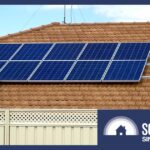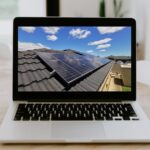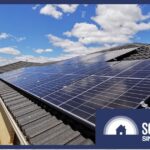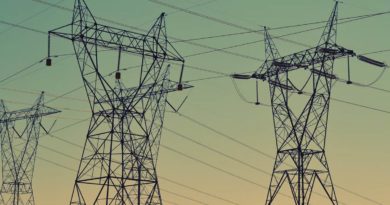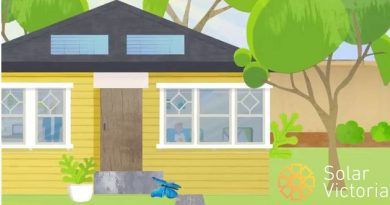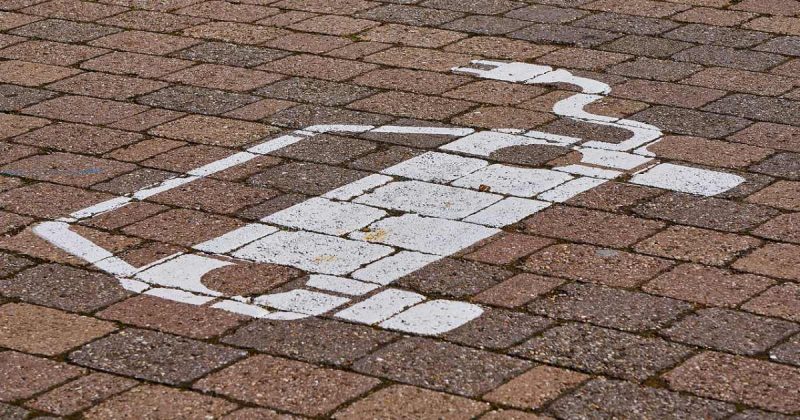Gardening Gloves On: Your Solar Panels Need a Scrub
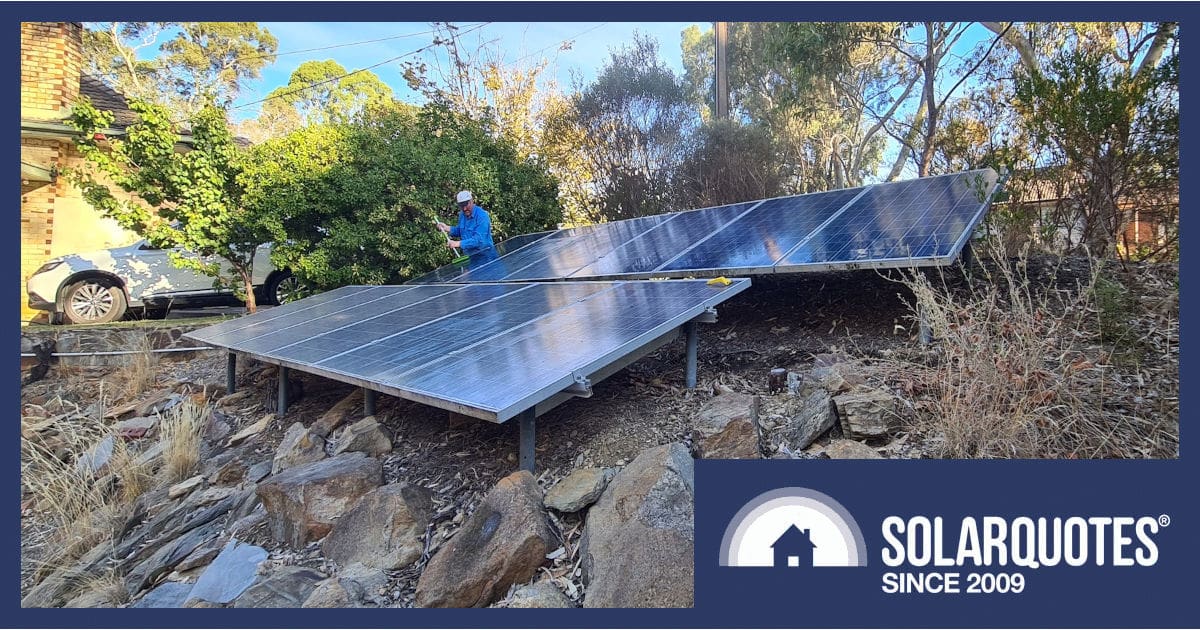

Over a decade ago I installed solar for a good mate of mine with a difficult roof. Recently I dropped past to see him, and found that things need a bit of maintenance. This is a short story about a surprising amount of grime.
After marvelling over a small electric car and chewing the fat for a while, I noticed the solar in Pete’s front yard was looking a bit lacklustre. He mentioned that he’s going through a bit of a houseproud phase and had cleaned them recently, but the lichen growing along the edge said otherwise.
We rounded up a bucket full of warm water, a car windscreen squeegee and some detergent, so we could set about giving things a quick once-over.
Famous Last Words
It turns out there’s a lot more black gunk stuck to the textured anti-reflective coating on these modules than first meets the eye — and it takes a lot more effort to remove than just a quick swish with a hose or sweep with a broom.
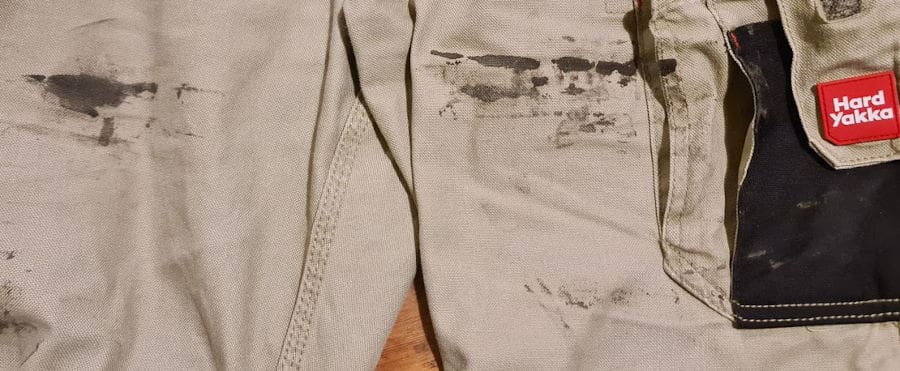
I hope this muck doesn’t stain
We spent at least a good couple of minutes on each of these panels, scrubbing with suds and elbow grease to move the buildup, then squeegeeing the muck away and rinsing with a hose.
The rewarding part was seeing the lovely spangled blue appearance of polycrystalline PV cells shine through as we worked. I’ve always thought these were an attractive thing to look at, like the zinc coating on freshly galvanised iron.
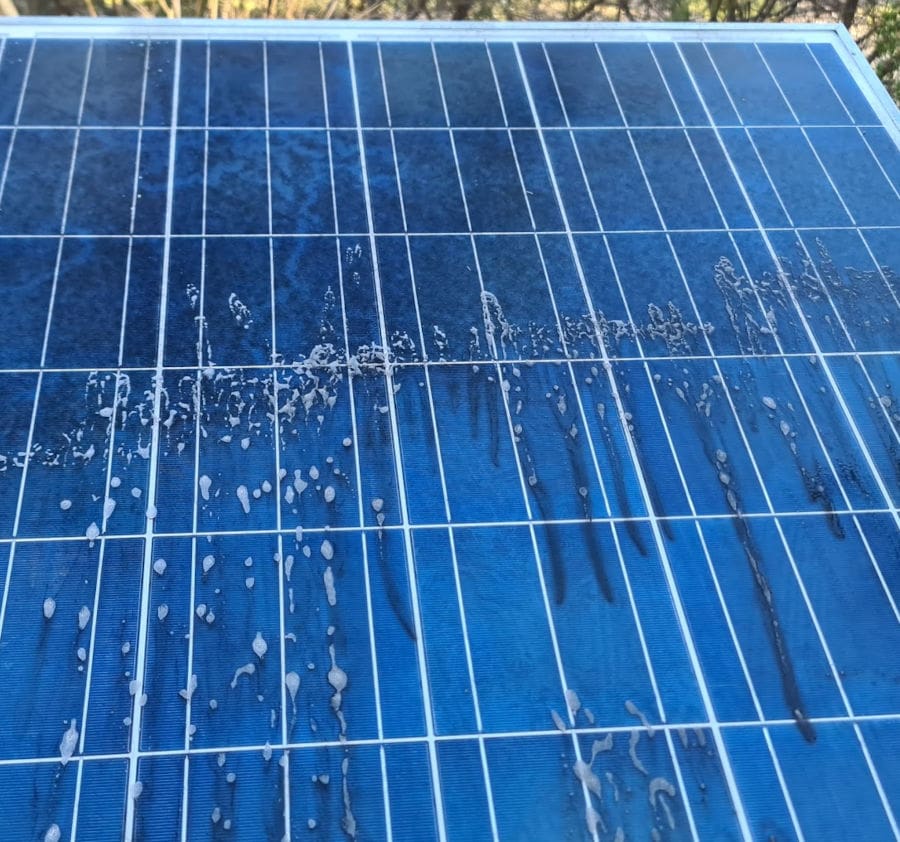
Vile-looking black runoff reveals the spangled blue polycrystalline cells.
Ground Mount Isn’t Just For Farms
This array is supported on a series of recycled street sign poles cemented into the hillside, with conventional rooftop solar framing spanning the posts.
It’s the sunniest spot on the property owing to a massive gum tree, which shades the house.
It was also much easier to install than trying to fix solar to a decramastic tile roof. Though it’s not impossible, most solar installers will simply run if you mention tin tiles.
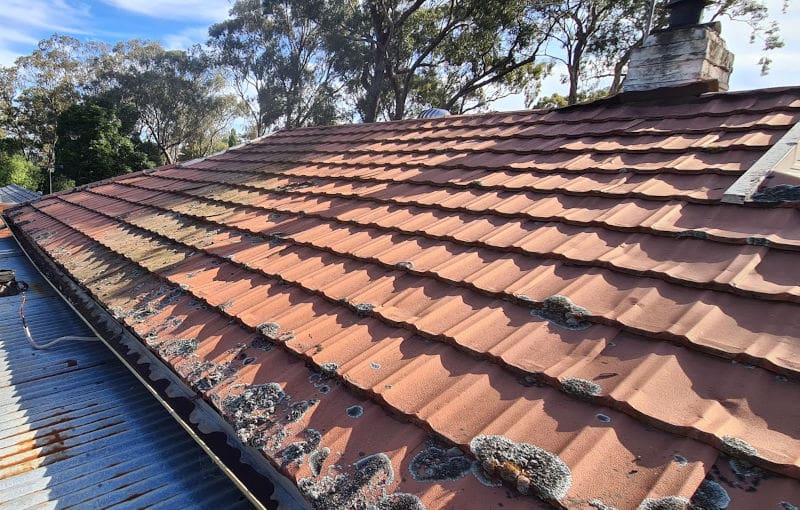
Tin tiles in all their dented glory are difficult to install solar onto.
Installation May Be More Expensive
For this job, the customer supplied the posts and helped with the installation.
Flexible solar installers will welcome assistance from competent DIY types because electricians usually have allergic reactions to shovels.
So if you can build a straight row of fence posts, you can save a lot of money. While the rule of thumb says you need 30% of your post embedded in the ground, the frame needs to be engineered properly, so consult with the installer and maker for correct spacings.
On this particular job, extra work on the tin tile roof to install hangar bolts would be expensive. For the effort involved with working at heights, like a harness and handrails, you can instead hire a mini digger to make holes in the ground.
Just try not to get your little skid steer machine with ground auger bogged on a precarious slope, or ask me how I know this.
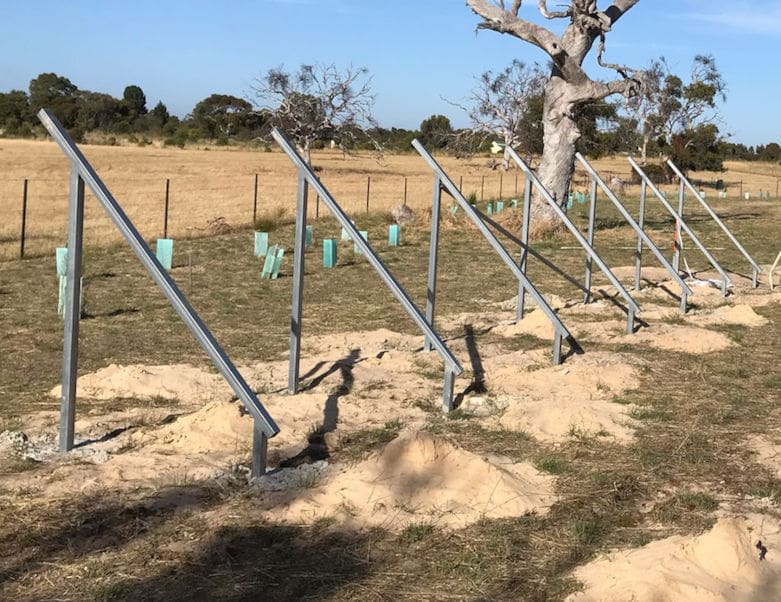
Built from 50mm square fence posts, these frames are pretty self-explanatory.
Underground DC Cables Need To Be Rated
It’s not hard, but worth bearing in mind that a few rules apply to ground mounts, like using appropriate cable if it’s buried. In the past we have installed arrays over an underground cellar and used them as a rainshed to keep the earth and things stored underneath dry.
Sheep like shade too, but like toddlers they like to mouth things, so cables must be kept well protected and away from nibbling lambs teeth.

This specific framing with rails at the top and bottom puts the plugs well away from livestock but easy to unclip for testing panels.
The Lowdown Is Serviceability
Being easy to reach without a ladder means more than a few things. Firstly, it’s easy to see when the lichen is taking over, so there’s a visual cue that simply isn’t available when it’s out of sight and out of mind on the roof.
Secondly, it’s safer for old knees and brittle bones. While I have had customers climb on the roof with me at 80 years old, statistically speaking ladders are very dangerous for the over 65s. Being able to do this job yourself while pottering in the garden is both a real cost-saving and safety improvement. For most people however, these benefits are outweighed by the extra cost or simple lack of space for ground-mounted panels.
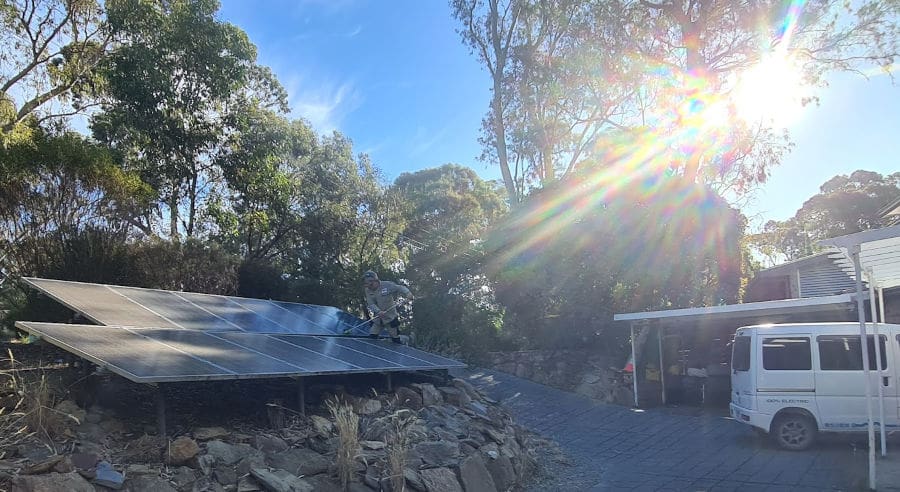
Try not to clean panels when it’s blazing hot
No Pressure Wash Or Dishwashing Liquid
Your favourite industrial cleaning machine puts out water at thousands of kilopascals (or pounds) and solar panels aren’t designed to handle that force. It’s not the glass that’s susceptible of course, but where the sandwich of EVA, Mylar and solar cells that’s sealed at the edge.
While the aluminium frame serves to protect this vulnerable junction from the weather and mechanical damage, it also holds water and concentrates the force of a high pressure stream. If you inject water into the edge of the panel, moisture leaks in, then electricity can leak out. Once you have an earth fault, the panel is junk.
The latest research indicates that the tilt of your panels is a big factor in minimising dust contamination. Other researchers have found that washing panels down with dishwashing liquid can impact panel performance, and recommended alternatives such as glass cleaner or isopropanol.
Get it right through, and your panels will perform better, particularly during prolonged dry spells when rain isn’t doing the job for you — not to mention gleam with that lovely spangled blue polycrystalline.
Original Source: https://www.solarquotes.com.au/blog/gardening-gloves-panels-scrub/




